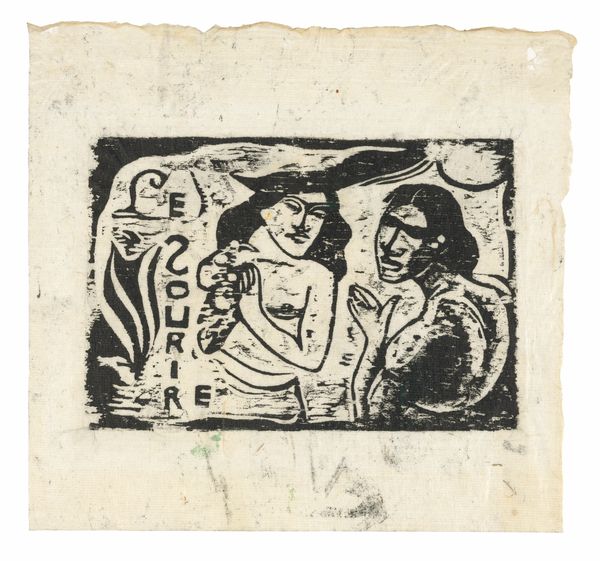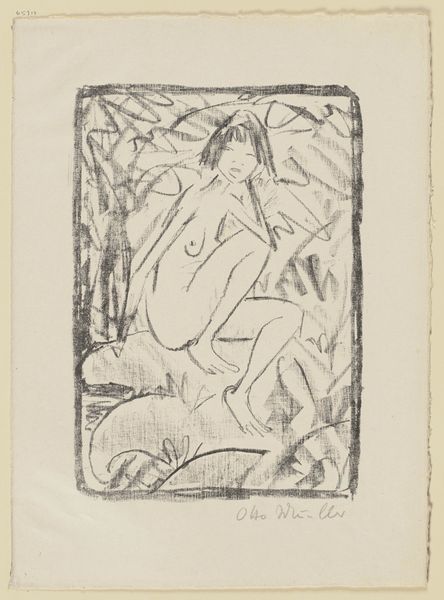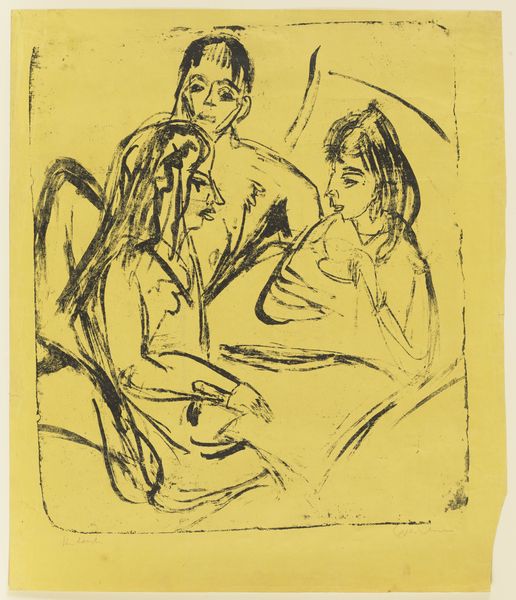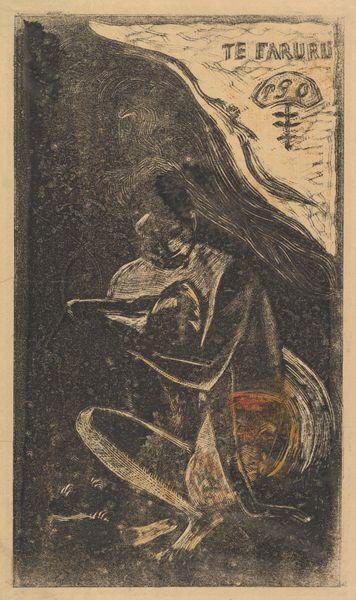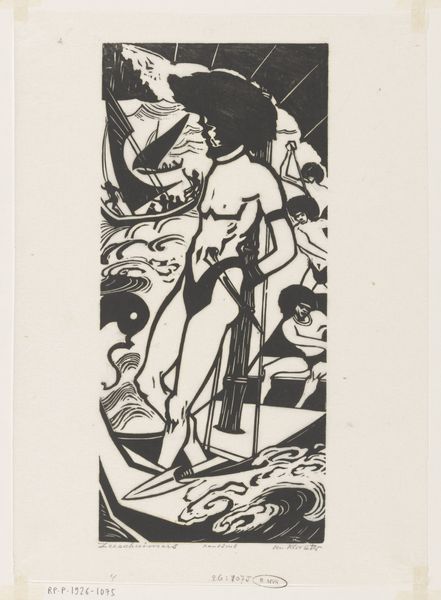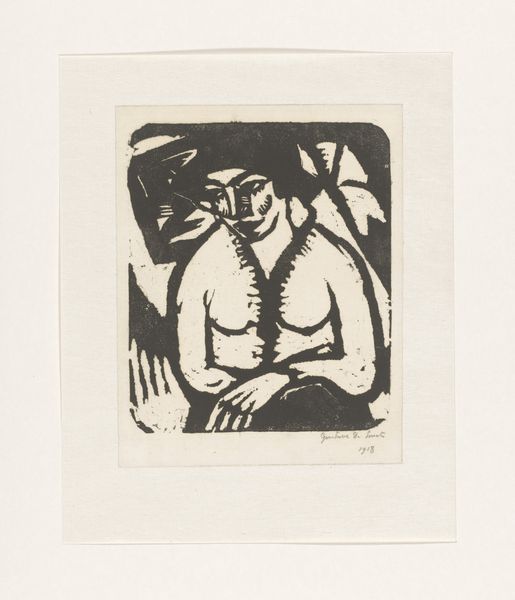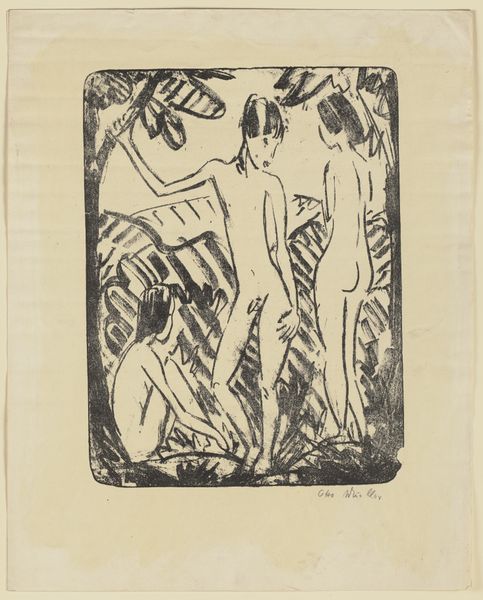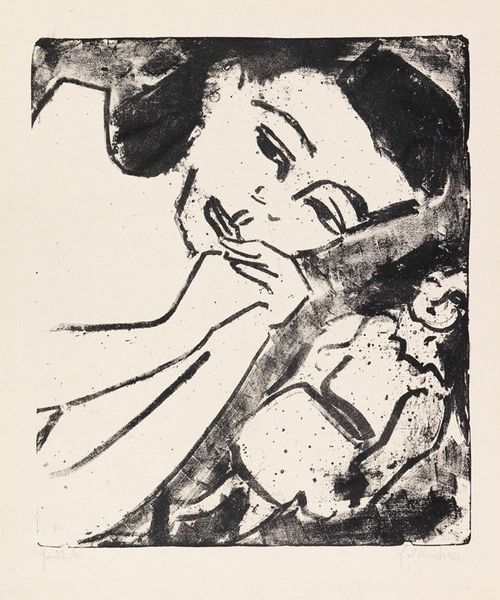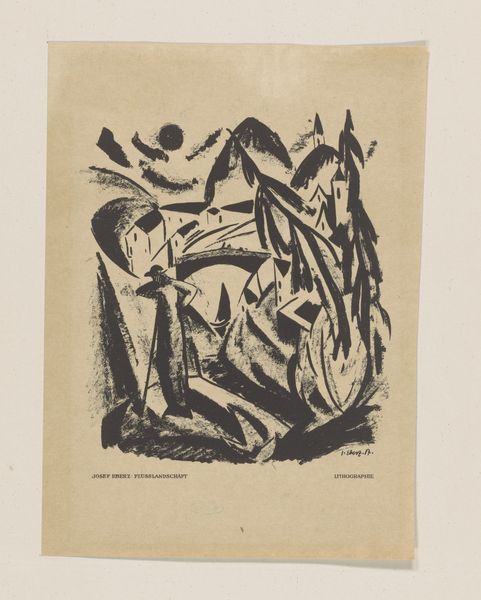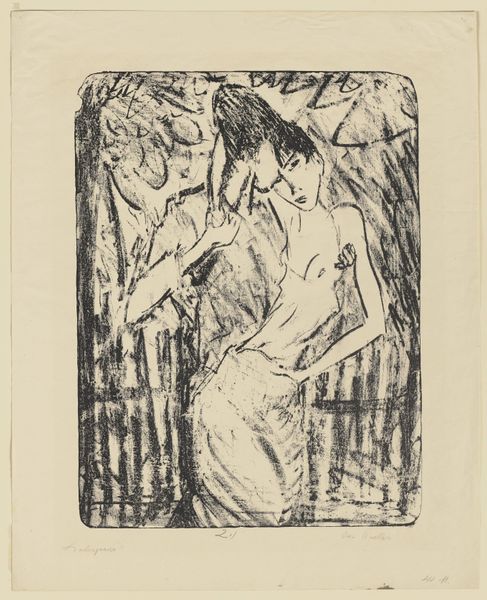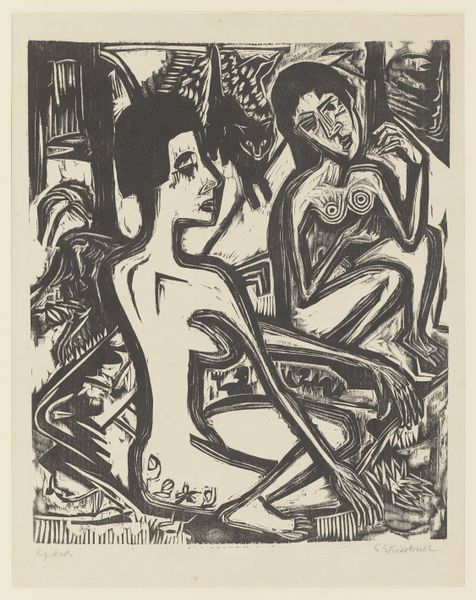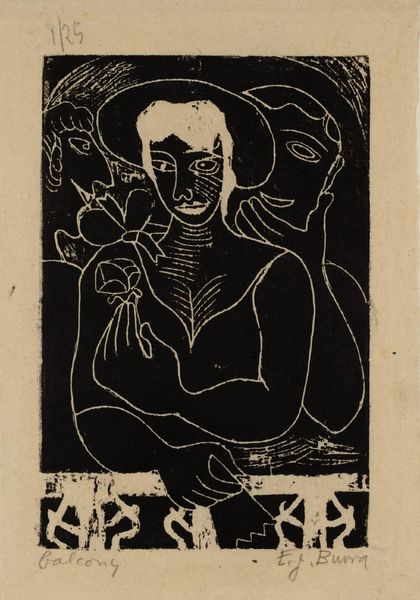
drawing, lithography, lithograph, ink
#
portrait
#
drawing
#
lithography
#
lithograph
#
figuration
#
ink
#
expressionism
Copyright: Public Domain
Curator: Otto Mueller's "Mutter und Kind I," created around 1919, a lithograph rendered in ink, captures a quiet moment between a mother and child. What's your immediate take on this piece? Editor: I’m immediately drawn to the stark contrasts in texture and tone. The crude lithographic strokes forming the figures almost overwhelm the tenderness implied in the subject matter, it seems more confrontational than comforting at first glance. Curator: Indeed. Mueller was associated with Die Brücke, and this piece certainly reflects their engagement with modernist primitivism, but filtered through very specific Weimar anxieties. It's a theme we see across their graphic work, often responding to wartime trauma, unstable social structures, and changing family dynamics. Editor: Absolutely. It's hard to ignore the economic realities informing this work. The rough quality speaks volumes about available materials, a reflection of the constraints artists faced. Lithography, as a relatively accessible printmaking method, allowed for wider distribution, democratizing the image. It wasn’t for an elite clientele. Curator: The flattening of the picture plane, a deliberate primitivism if you will, rejects academic artistic traditions and presents motherhood in a far more universal sense. How do you think this aesthetic relates to the viewer's experience of motherhood at the time? Editor: Well, I wonder about the viewer’s reception back then; were the means and marks more visible as signs of labor to the viewer, when there was a deeper recognition and sensitivity around materiality? Were the marks supposed to point back to an industry, or craft, where the production element and artistic endeavor come together? It’s intriguing. Curator: I believe it speaks to the broader societal upheaval that followed the war, shaking long-held societal notions. Motherhood wasn't idealized; instead, there's an attempt to display a more raw, real experience. We often forget that alongside societal disruptions came more fluid, ambiguous constructions of personhood. Editor: Precisely, and to view "Mutter und Kind I" through the lens of labor and accessibility shifts our perception. It's no longer just an image of maternal affection, but one rooted in production, circulation, and ultimately, survival through creativity. Curator: By focusing on the image’s creation and consumption, and linking those aspects to wider sociopolitical realities, this approach grants a deeper grasp on its enduring resonance. Editor: A crucial reminder of art's inherent connection to our shared humanity, a humanity expressed both materially and socially.
Comments
No comments
Be the first to comment and join the conversation on the ultimate creative platform.
